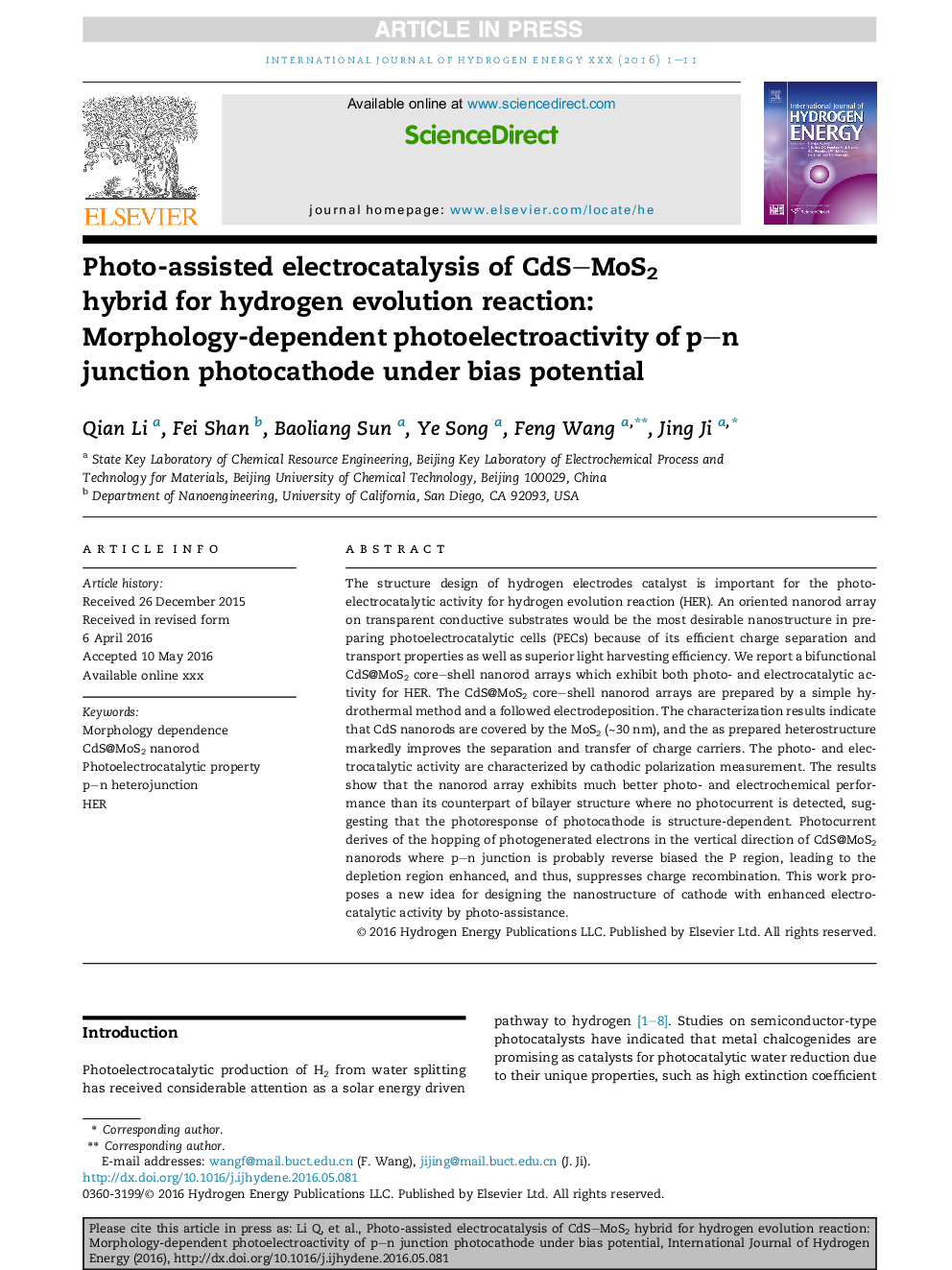| Article ID | Journal | Published Year | Pages | File Type |
|---|---|---|---|---|
| 5148431 | International Journal of Hydrogen Energy | 2017 | 11 Pages |
Abstract
The structure design of hydrogen electrodes catalyst is important for the photoelectrocatalytic activity for hydrogen evolution reaction (HER). An oriented nanorod array on transparent conductive substrates would be the most desirable nanostructure in preparing photoelectrocatalytic cells (PECs) because of its efficient charge separation and transport properties as well as superior light harvesting efficiency. We report a bifunctional CdS@MoS2 core-shell nanorod arrays which exhibit both photo- and electrocatalytic activity for HER. The CdS@MoS2 core-shell nanorod arrays are prepared by a simple hydrothermal method and a followed electrodeposition. The characterization results indicate that CdS nanorods are covered by the MoS2 (â¼30Â nm), and the as prepared heterostructure markedly improves the separation and transfer of charge carriers. The photo- and electrocatalytic activity are characterized by cathodic polarization measurement. The results show that the nanorod array exhibits much better photo- and electrochemical performance than its counterpart of bilayer structure where no photocurrent is detected, suggesting that the photoresponse of photocathode is structure-dependent. Photocurrent derives of the hopping of photogenerated electrons in the vertical direction of CdS@MoS2 nanorods where p-n junction is probably reverse biased the P region, leading to the depletion region enhanced, and thus, suppresses charge recombination. This work proposes a new idea for designing the nanostructure of cathode with enhanced electrocatalytic activity by photo-assistance.
Related Topics
Physical Sciences and Engineering
Chemistry
Electrochemistry
Authors
Qian Li, Fei Shan, Baoliang Sun, Ye Song, Feng Wang, Jing Ji,
